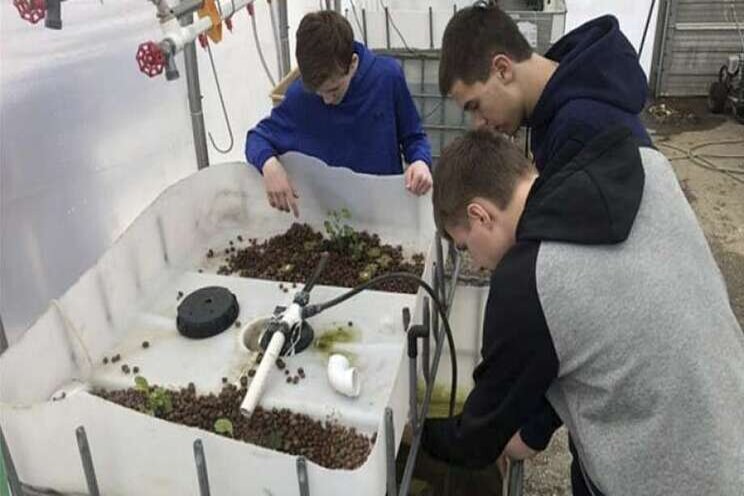A fishy way to raise food
Added on 23 September 2020

One of the classes offered deals with aquaponics, which involves raising aquatic animals and plants in a mutually beneficial way for both.
Joseph Ankley, the agriscience and FFA advisor for North Huron Schools, said that North Huron purchased its large aquaponics system five years ago, and it is utilized for sophomores' Zoology & the Environment course each year.
Aquaponics is a combination of aquaculture, which is raising aquatic animals and plants for food, and hydroponics, which is growing plants without the need for soil. Combining the two allows for the growth of plants and aquatic animals in a closed-loop system.
"The waste produced by the fish (or other aquatic animals) in the system is used by the plants," Ankley said. "The goat is to keep the system self-sustaining by only adding food, and water, when needed."
Students have grown a variety of vegetables, houseplants, and other greens with this method, while animal species raised include tilapia, koi, goldfish, hybrid bass, crayfish, shrimp, and turtles.
Ankley noted that this is an efficient way to grow fish and vegetables, with leafy greens like lettuce and kale doing particularly well in such a system.
When students develop their own systems in the fall, they get to choose how their systems are set up and run and which kinds of plants and animals will grow.
Those systems run from November to March, with data about them collected daily.
"I wanted a large project-based activity that would compliment both the zoology and environmental topics we cover in our sophomore science class," Ankley said. "With this multi-month project, students use their engineering and design techniques to construct their own systems."
In maintaining their own mini-ecosystems, students learn about sampling techniques for pH, water temperature and nutrients. It also gives them the opportunity to learn from mistakes if anything in the system is not working.
"It is a very student-centered and hands-on project that allows students the freedom to build (and sometimes re-build) their own systems," Ankley said.
As part of the last year's goals with aquaponics systems, students designed and built 10 aquaponics systems in the school greenhouse and were able to raise rainbow trout, bullfrogs, and trapdoor snails in this manner, along with the other aforementioned animals. The plants grown through the program have been used as food in the school's cafeteria.
Source: Michigan Sthumb
Photo: North Huron students working on their aquaponics systems. The program is aimed at teaching students new ways of raising plants and animals. (Courtesy Photo/North Huron Schools)
Source: Michigan Sthumb
More news















